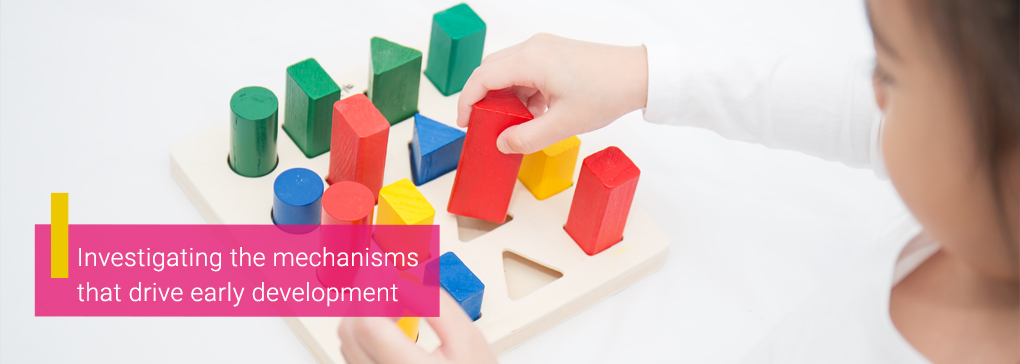
Experimental methods and innovative research techniques with babies
In the BabyBRAIN group we use a broad range of experimental methods and innovative research techniques with babies to understand the mechanisms that drive early development. We are part of the Baby & Child Research Center.
Looking behaviour
Using eye-tracking technology, we can measure where infants and children look when we present them with different stimuli. As such, we can learn what infants find interesting, how they explore different stimuli, or what they expect to happen next. We also measure pupil dilation, for instance as an indicator of surprise.
Observing behaviour
We also study infants’ natural behaviour in their social surroundings. We video-tape them during natural interactions with their caregivers or peers, or while they playfully interact with an experimental setup at our research center.
Measuring movements
To study the movements of infants and children – and sometimes their adult interaction partners – we make use of motion tracking. Using small reflective markers, we can precisely register how our participants move. We have implemented this technique, for example, to study reaching in young infants or to investigate how parents adjust their movements when interacting with a young child.
We also apply surface electromyography (EMG) to register young children’s subtle face movements, such as emotional expressions and functional Near Infrared Spectroscopy (fNIRS).
Computational Modelling
We also use computational models for understanding key phenomena of early development, such as the emergence of a sense of agency in infants, the workings of infant-directed actions, or infants’ curiosity-driven exploration.
Method development
We contribute to method development as we did within the MOTION project and are committed to open science and data sharing.




